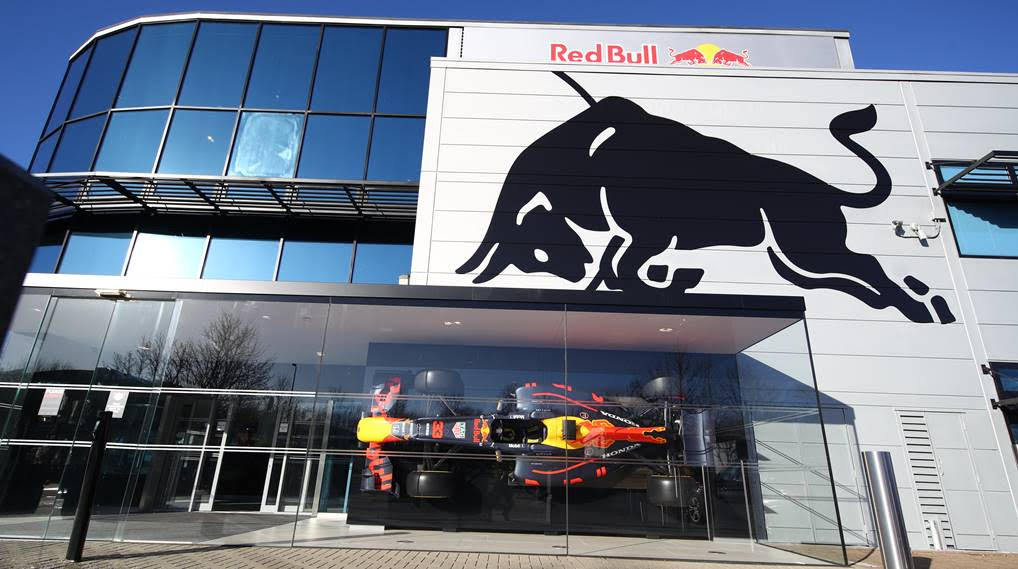To see the work going on behind the checkered flag, ERP Today was invited by Oracle and IBM and heard how enterprise technology is helping to deliver race day success for Red Bull Racing.
Arriving at the Red Bull Racing center, tucked away in Milton Keynes, my car number plate was scanned at the entrance before the automated barrier raised. There are a lot of tactical secrets to be kept in the F1 world, to the extent that Red Bull had to buy the road its HQ was based on to stop photographers attempting to catch a glimpse.
A group of 20 lucky IBM and Oracle customers (and ERP Today) were directed to the boardroom, where, with a view of 14 of the latest winning F1 cars semi-circled behind us, a talk was given on how Red Bull Racing works with Oracle and IBM software.
Miles Jackson, consulting member of technical staff at Oracle for Red Bull Racing, explained: “What you see on the TV of the race team, those 60 people, two drivers, 24 mechanics, that’s not the whole team. There’s an entire multiple-building complex of at least 1,200 people working here towards that one aim. Data is the lifeblood, the synergy, that holds us all together, and that is what Oracle is helping with.”
Following 15 years at Formula One, working with Williams, seven years at Mercedes Gran Prix and a year at Aston Martin, specializing in aerodynamics, wind tunnel testing and race strategy, Jackson has spent the last year with Oracle Red Bull Racing with his day-to-day focusing on integrating Oracle’s tools to bring performance to the race team.
“From 2021 when Oracle was a car sticker, to being chosen as Red Bull Racing’s cloud partner, to now becoming title partner, it brings a suite of applications and plus the Oracle Cloud infrastructure to help as part of the fabric of the team.”
Billions of simulations on OCI
To perfect race strategy, billions of simulations run on OCI with Arm CPUs to help them give predictions on the race. Factoring elements such as weather, crashes, pitstop and tire changes, roughness of the track, gear ratios, red flags, safety cars and so on, the team will run simulations to train the team through data.
Aware of what the computer thinks they should be doing, they can make less risky decisions based on more information offered by data and analysis through IBM and Oracle software. Come race day it’s not just the track team, but also from the mission control room onsite on Milton Keynes, all this data and information is being fed back constantly during the race.
“Because they have the data and the confidence that it’s gone through billions of simulations, they know that their decisions are actually less risky,” explains Jackson. “The reason why OCI is key, is that if the team needed to increase the size or run more simulations otherwise they’d have to buy 1000 more computers or similar, which means more space, upkeep and a huge cost. With availability on cloud, we can be flexible, adding more variables without adding infrastructure, while being massively cost effective and energy efficient. So on race day, when we run billions of simulations on thousands of cores, it only costs around £150 with OCI.”
A whole new engine to hit the track by 2026
Being prepped to launch on the grid by 2026, the Red Bull Ford Powertrains partnership is now developing its own engine, with all the computational fluid dynamics for the development running on OCI.
“Moving from Honda engines, OCI has enabled them to create a start-up company, getting up and running and scaling fast within two years, because they didn’t have to buy all the infrastructure and support it – they could just turn it on,” says Jackson. “From 100 staff, they’ve moved to another hundred and another and so on in that time and expanded their use of OCI too.
“They’ve got the first dyno and are now doing constant iterative mode simulation and prototyping until 2026 when they have to roll out onto the grid with their own Red Bull Ford engines. With only four or five engines per year, it has to be more durable and the amount of simulations on these things is up there with aircraft.”
The design work is being performed via CAD PLM systems and the drawn design – whether for a combustion chamber head, or valves and so on – is then inputted into OCI for running computational fluid dynamics views of the full engine cycle.
With the moving parts involved it is hugely complex to run and multiphase so requires high-performance computing. Oracle worked with Arm to build a new E5 chip, and Red Bull became the first customer, with a custom cluster running for them down in London, and have since helped with feedback on the initial release of the chip in the cloud.
Creating ‘The Paddock’ to nurture 90m fanbase
Oracle tools have been able to build up a fan website and integrations. For the racing firm, it’s said the true product is its fans, and in this vein, Oracle has been key in nurturing the 90 million fan base worldwide.
Back in 2021, a new fan website was built in six months, called The Paddock, using all of Oracle’s backbone software tools, to attract new fans to register, personalize and engage and as a result retain fans engaged with Red Bull Racing. Since then, the site has won awards, and in its first year gave over 120 million points away to fans for interactions. This year has seen a fan-designed livery in Miami, through hosting a site competition, and now in the pipeline is a tool to enable fan access to live drone data on race day.
Using Oracle CrowdTwist, Oracle Responsys, Oracle Infinity IQ, Oracle Eloqua, Sauce Video, CX Unity and more, alongside Oracle’s consulting services, the Paddock can track user actions, feeds more of what each user likes and reward users for interacting, with everything from hats to factory tours and driver meets.
A heightened digital journey with eSports
Thanks to cloud, analytics, ML and AI capabilities, fans can also get a heightened experience from the Esports team and the drivers can improve performance on the digital track. On a physical Formula One car, 300 sensors pull data on the vehicle and driver performance. In the games, all that is mimicked with mathematical formulas. One driver creates over 240,000 data points per second, which can now be piped into the cloud and worked on with the Oracle suite of tools, including ML and AI to provide feedback to the eSports drivers almost instantly, anywhere in the world to perfect driver strategy on the digital track. Now, fans are also being given access to the data, intensifying the watcher experience too.
Afterward, ERP Today was given a tour of the Red Bull Racing factory to see how OCI was interwoven throughout the organization and making of the car parts too, from testing material performance to tracking wind tunnel successes.
Sworn to secrecy, as no cameras or reporting is allowed, we can’t share further factory details, but for those wanting to see the workings themselves, word is that jumping onto The Paddock can win you a tour – and it’s well worth it!




